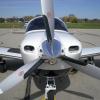CHTs too cold?
-
Members Online
- wivika2537
- redbaron1982
- BenjaminK
- OSUAV8TER
- Hank
- FlyingDude
- dzeleski
- K_AWA
- Aviationist
- LANCECASPER
- mooneyflyer
- M20S Driver
- toto
- 201er
- A64Pilot
- StevenF
- Grumpy
- UteM20F
- Crawfish
- Guy123
- katzhome
- tankles
- Joshua Blackh4t
- ta2too
- woodwood304
- Bill C
- eman1200
- da3b242
- Jake@BevanAviation
- M20F
- Mark Lary
- Stubby
- ohdub
- ckb
- Max Clark
- Rmfriday
- Ron McBride
- jsimmons619
- Little Dipper
- Scopes


Recommended Posts
Join the conversation
You can post now and register later. If you have an account, sign in now to post with your account.